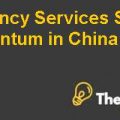
QUESTION 3: How will Pillsbury’s plans affect relationships throughout the food chain, from its suppliers to its wholesalers, distributors, and retailers, through consumer checkout? What barriers may arise and how can they be overcome?
ANSWER:
Pillsbury is one of the leading names in the branded food products. However, the competition in this market is also very big. Therefore, Pillsbury is constantly looking for ways for cost reduction, profit margins and value creation. The company has some long term plans to achieve cost reductions of about 11-22% which constitute about $300m of cost reduction from the total cost base of the whole company. Of this amount $ 100m cost reduction will be achieved through reengineering the customer supply chain. $50m cost reductions would come from managing the customers by using the demographic information, studying their buying behavior, implementing a rigid customer segmentation strategy and also target marketing. The remaining $150m cost savings will be achieved through focusing on the areas of supply chain management such as the transportation, manufacturing, warehousing and relationships with key suppliers and vendors.
If the company reengineers the entire processes of the company, introduces the ABC costing method and performance measurement in marketing and sales, then it is surely going to have huge impacts on the suppliers, wholesalers, retailers, distributors and the customers. Effective redesigning of business processes requires a lot of information sharing and coordination among all the supply chain partners. For instance, Pillsbury is focusing on the quality of its food products. The company will then have to focus more on the quality of its inputs for that it will have to maintain good relationship with its suppliers, negotiate good term and long term relationships. Once the company implements the total quality management to work on continuous improvement and produces high quality products it will then also have to educate its wholesalers, retailers and distributors on the handling of the products, passing on the correct information along the supply chain. The retailers will also have to be educated to be able to tell the customers about the quality of the products and how to shelf them in their shops.
The reengineering of the business processes will also have a great impact on the consumers and their buying behavior. The companies prepare their plans for first focusing on their customer’s needs, therefore once the plan has been executed and successfully implemented the company needs to focus on where can those needs be met, how will the customers get the complete set of benefits that they desire. Pillsbury needs to focus on complete coordination and maximum information sharing both ways.
One of the main barriers that may arise after the reengineering is done is that there might be no productive communication and coordination along the supply chain or the information that flows along the supply chain may be distorted. Once this happens the members of the organization will all oscillate and each and every member will then focus on to solve the problem by their own perspective. The network will breakdown, the whole supply chain will suffer and eventually the performance and reputation of the company will deteriorate. This one of the broad concepts and when there is a severe distortion along supply chains it is known as ‘the bull whip effect’. There can be many causes of a bull whip effect along supply chains, but the most important are the following three:
- No communication or distorted communication along the whole supply chain.
- No coordination among the members of the supply chain.
- Timings of the delay for the information and material flow.
Pillsbury needs to have plans in place to avoid such problems along the supply chain. It should focus on the components of the value chain analysis model. The firm should manage its inbound and outbound logistics, operations, marketing and sales and the services being provided along the supply chain. Pillsbury should focus that once its plans for the $300m cost reductions are transformed into a strategy of reengineering and implemented, they should coordinate and communicate well with all the members of the entire supply chain. Some of the measures to avoid the bull whip effect along the supply chain could be:
- The company should look day-to-day how the operations of the supply chain perform. It needs to observe the changing needs and demands of the customers and operations of the supply chain...............................
This is just a sample partial case solution. Please place the order on the website to order your own originally done case solution.













